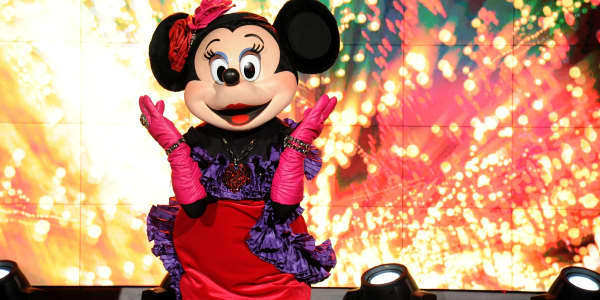Paper towels embossed to look like cloth. Tampon packages with a glossy metallic sheen. Designer ice cubes for $75 a bag. Marketers are going glam with everyday products, taking them upscale as they give up on selling to the middle class.
Companies have reacted for years to the shrinking middle class by developing both top shelf and bargain versions of their product lines. Toyota has been successful with the Lexus. Frito-Lay has introduced Olive Coast, kettle-cooked chips with a Mediterranean flavor, as well as "Taqueros," a discount tortilla chip. Apple's new iPhone comes in both a $199 version and a $99 one with cheaper components.
For the wealthy, a 20 percent markup is a small price to pay for "luxury." For some in the middle class, it's a way to feel affluent, at a cost. For the poor? There's the bargain brands. In an economic recovery that has magnified income inequality, consumers are either spending at the Family Dollar stores of the world, or at the Nordstroms.
(Read more: Luxury brands regain 'cool' but techs lose 'wow' factor)
The U.S. Census Bureau recently reported that national real median household income was $51,017 in 2012, 8.3 percent lower than in 2007 and 9.0 percent below the income peak in 1999. As the middle class feels like it's scraping by, it has less buying power to target with average products at average prices. By 2011, the top 5 percent of Americans by income accounted for 37 percent of all consumer spending, according to a Moody's Analytics survey. By contrast, the bottom 80 percent accounted for 39.5 percent.
Now traditional middle-of-the-road companies are experimenting with going up-market.
The Procter & Gamble Co's new Bounty DuraTowels are enclosed in thicker plastic and feature an embossed print that resembles a dish cloth. "3x cleaner than a germy discloth," says the package. "Feels and cleans like a cloth."
The cost is $0.05 per square foot, nearly double regular Bounty paper towels. Similarly, P&G's Cascade Platinum dishwasher detergent boasts that it is "our ultimate clean for dishes" and it "keeps the dishwasher sparkling," at a 12 percent markup.
(Read more: Burberry confident in China despite luxury crackdown)
Tampax "Radiant" costs 59 percent more per unit and use "designer packaging and wrappers." And Dean and Deluca is selling premium ice cube spheres "individually carved from a 300lb block to ensure flawless quality and a zero-taste profile." A 10 cube bag costs $75.
Dean & Deluca didn't respond to a request for comment but P&G spokesman Bryan McCleary said, "Our strategy is actually to offer great products across all price ranges." He pointed to how the company will soon start selling a lower-priced version of Tide called Simply Clean, and last year launched Tide Pods, "a great new way to wash clothes," priced in the higher tier.
More from NBC News:
Big box store selling rare, big bucks booze
The 'ShamWow Guy' cleans up his act
'Grand Theft Auto V' sales blow past $1 billion in three days
The trend driving the strategy is that consumers are scrimping on the products they don't care about to make room in their budget for those they do. US consumers plan on cutting back spending on eating out by 41 percent, and non-mobile electronics like TVs by 30 percent in 2013, according to the preliminary results of a survey by the Boston Consulting Group. Meanwhile, consumers reported they'll be spending 13 percent more on environmentally friendly home cleaning products, and nearly that much more on mobile electronics and fresh meat.
"It's an emotional splurge," said Steve Kazanjian, a brand strategist at packaging company MeadWestvaco Corp.
The premium prices may seem an impractical purchase for anyone, let alone for the 99 percent of earners who saw their incomes fall 11.6 percent during the most recent recession, but only go up up .4 percent during the recovery, according to an updated study by the prominent economists Emmanuel Saez and Thomas Piketty.
(Read more: Cutouts to pastels: Fashion Week's hottest looks)
But while being middle-class can mean a lot to those who think they belong in it, marketers take a different view.
For them, "middle class" was simply a label to describe consumer behavior. It was also a very poor one, said Peter Fader, a professor of marketing at University of Pennsylvania's Wharton School.
"We had to bucket based on easily observable characteristics," said Fader, such as age, gender, income, and home ownership. "Not because it was was a proven way to discriminate purchasing habits, but because it was all we had."
Now with companies able to scoop up our data from the apps we tap and the remote control buttons we push, it's easier to figure out out what makes people tick, said Fader. "This person wants to be a super-fancy chef, this person wants to be a super-healthy mother, so let's position products accordingly."
(Read more: Beauty secret: fashion's bet on a $10 billion biz)
Consumers can now go for hand-harvested sea salt instead of Morton's, or spring for a "single origin" pour over coffee instead of Folger's. For a few dollars more, the premium products offer a whiff of a better life.
P&G and others are betting they can go the same route with items like paper towels and tampons designed for those who appreciate the finer things, even when wiping down a counter.
However, for consumers to truly accept a new luxury item, "you have to deliver discernible substantive benefits," said Milton Pedraza, CEO of the Luxury Institute. It needs to work better. It needs to look better. And it needs to feel like a reward.
But "going lux" might be an impossible task for some products entirely, where true innovation is hard to develop, and even harder to prove.
"Who's going to tell the difference between 'really clean' white sheets and 'super clean' white sheets?" said Pedraza.




